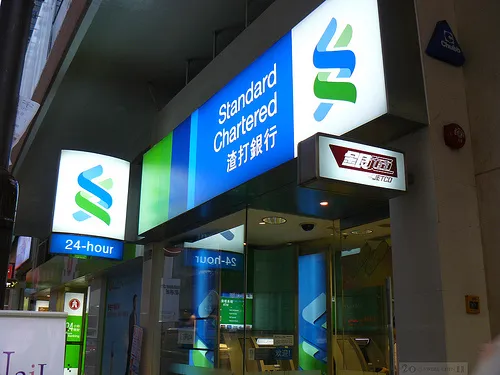
This is why 2012 was an 'unusual' year for Standard Chartered
Weaker revenues but cost control compensating well.
According to Barclays, 2012 was something of an unusual year for Standard Chartered with revenues weaker than we are used to but with cost control compensating well.
Management hopes for a more normal performance in 2013 with both revenue and cost growth higher and resisting the RoE boost that could be derived from slower cost growth, arguing that this would be at the cost of longer-term earnings.
Here's more from Barclays:
On the face of it, cost control didn’t look that great in 2012 with reported costs growing at 10% or 2% faster than revenues.
However, we see the underlying performance as far more impressive, with 3% underlying cost growth and 7% underlying revenue progression delivering 4% positive jaws and a 2% YoY reduction in the cost:income ratio to 53.6%.
This has been primarily driven by Wholesale where underlying costs fell 1% YoY while revenues increased 8% with the cost reduction particularly marked in the second half of the year.
This was mainly within staff costs which benefited from improved efficiency and lower variable compensations. We have previously highlighted an up to 2% RoE benefit that could be achieved by aligning the cost:income ratio, particularly of the Consumer Bank, to local peers.
However, management are keen to continue highlighting the medium and long-term growth opportunities that set Standard Chartered apart from its developed market peers but also require ongoing investment. This drives the company’s expectation of growing costs in line with revenues in 2013 and beyond.
Credit costs continue to rise: After a sharp deterioration in Wholesale credit quality in 1H12 when both NPLs and the impairment charge picked up sharply due to what the company referred to as a small number of significant exposures in India and the Middle East, the pace of NPL formation slowed markedly in the second half of the year, running at a quarter of the pace seen in 1H12.
As a result, the 2H12 Wholesale impairment charge decreased to c.30bp of loans, down from 40bp charge in the first half of the year with India and the Middle East accounting for around 70% of the Wholesale charge.
Nevertheless, the NPL ratio in India and MESA continued to rise, standing at 11% and 14.2% respectively at year end (compared to 9.5% and 13.9% at 1H12), the highest level in over a decade.
There was also a continued deterioration in Korea, although at 3.4% the NPL ratio there remains below its historic peak. Coverage of Wholesale NPLs including both provisions and collateral was broadly stable on 1H12 at 65%, although this is below the level seen in 2009 and 2011.
Management remain confident in credit quality and are not seeing any new areas of stress, although this is contingent on the broader economic environment.
In Consumer, impairments continued to rise reflecting volume growth, continued shift in the mix towards unsecured lending as well as some localised pressure in Korea due to the Personal Debt Rehabilitation Scheme.
We continue to expect a normalisation of Wholesale NPLs in most of Standard Chartered’s geographies over time and also expect to see an increase in the level of provision reserves in the near term.
Along with a continued shift towards higher-risk unsecured lending in Consumer, we see continued upward pressure on impairments.




![Lorem Ipsum [ABF 1]](https://cmg-qa.s3.ap-southeast-1.amazonaws.com/s3fs-public/styles/exclusive_featured_article/public/2025-03/a_hand_pointing_to_a_futuristic_technology_5b87c9d0e3_1.png.webp?itok=2w0y1WhS)


![Cross Domain [Manu + SBR + ABF + ABR + FMCG + HBR + ]](https://cmg-qa.s3.ap-southeast-1.amazonaws.com/s3fs-public/styles/exclusive_featured_article/public/2025-01/earth-3537401_1920_4.jpg.webp?itok=WaRpTJwE)







 Advertise
Advertise

